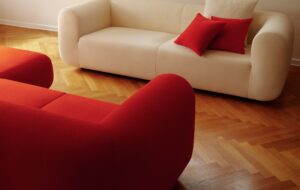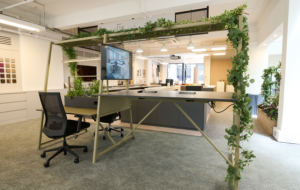|
|
||
|
The designer finds inspiration in the landscapes of western Norway to create natural furniture pieces of warmth and charm Bergen lies on the west coast of Norway, buffered from the North Sea by scatterings of islands, deep fjords and dark mountains. The city is said to be Oslo’s quieter, more creative, cousin and its disused sardine factories and silos now house hip graphic agencies and young product and furniture designers. Perhaps the best known of these is Lars Beller Fjetland, who graduated from the Bergen Academy of Art and Design in 2012 and now has a string of successful products with Italian manufacturer Discipline. Nature and curiosity guide Fjetland’s designs, and he has chosen to work with only natural materials such as wood and cork. “It is truly amazing to live so close to the mountains and the sea. It’s a huge inspiration and a sanctuary,” he says. “Nature has found solutions for all of its challenges, perfected down to the smallest detail. Form and function are united with no room for anything unnecessary. I like to think that’s evident in my work.” Touchwood, a stacking chair for Discipline, will be presented at this year’s London Design Festival. As chairs go, the humble stacking typology isn’t known for spawning many showstoppers, rather robust, cheap and dependable favourites like Robin Day’s Polyprop for Hille (1963). Fjetland’s approach is similarly guided by function and affordability, but the all-wood design offers warmth and tactility, too. “Traditional paint was never an option for this project, the warm glow and textures of the ash would be its key feature.” The wood is instead stained in a range of inoffensive colours that suit home, work or restaurant. “The opening in the back provides a gentle flex for long dinners that might last into the night.” There’s a playful thought or element of charm to all Fjetland’s projects. The popular Re-turned set of wooden birds is crafted from leftover wood: like less sophisticated Eames birds, they squat on a surface like clumsy bowling skittles rather than perch elegantly. Also for Discipline, Pomme is a block of cork sculpted into an apple shape for pinning notes to; and Maya is a coffee table of travertine and wood that harks back to ancient civilisations. All projects are built as fully functional prototypes before being handed over to a manufacturer. “It’s important for me to experience the product before it leaves the studio. That way I can see the challenges and potential problems the manufacturer is going to face. It’s extremely time-consuming but I wouldn’t have it any other way.”
Making and problem-solving are strong traditions at the Bergen Academy of Art and Design, and the school has a nurturing approach that has kept a number of design alumni loyal to the city and “scene”. It is pragmatic in equipping its students for real life, and there is an incubator office for talented graduates to take advantage of for up to two years as they transition into the real world. Students are taught to collaborate rather than compete, and although the draw of Oslo or London has proved tempting for some, Fjetland and his contemporaries say there’s a benefit to staying in a small but supportive network of designers. “The city has been good to me and I felt like I owed it to stay,” he says. This September he will embark on two projects that focus on reviving traditional production. “It’s easy to get frustrated with the Norwegian furniture industry as it is struggling to survive … but some [companies] have managed to take advantage of foreign markets by focusing on quality and tradition.” Fjetland cites Andreas Engesvik’s collaboration with century-old wool mill Mandal Veveri as a good example of an old craft being reinvigorated by new design. “I genuinely feel it’s my responsibility as a designer to get involved, as there is a lot at stake here. A lot of tradition is in danger of being lost. One designer can’t make a huge difference but there seems a tendency for lots of Norwegians to focus on the issue. It won’t make us rich for sure. But it’s about something bigger. Something real.” |
Words Riya Patel
Images: Magne Sandnes |
|
|
||
|
|
||



















